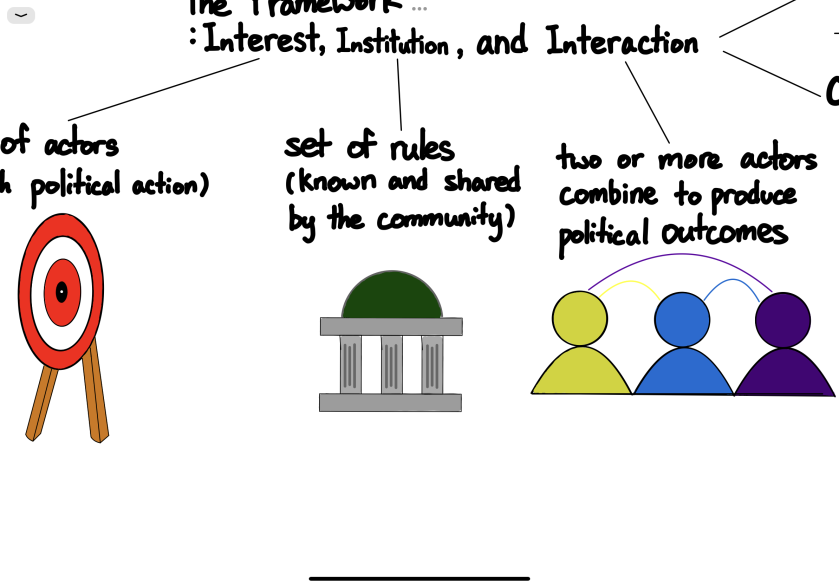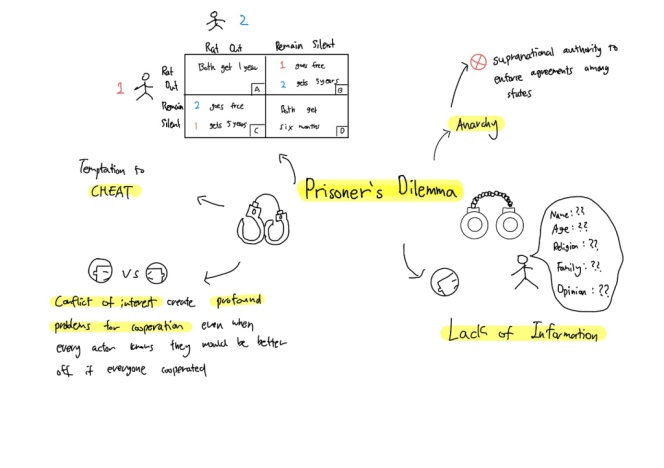Sketch 3: Visual Note Taking

For the assignment, I organized the notes from POLS 110. It contains basic principles of international relationships. Three valid theories in explaining the world interaction – Realism, Liberalism, and Constructivism – is concisely addressed according to the three framework that was introduced – Interest, Institution, and Interaction. Different levels of analysis – International, Domestic, and Transnational – and 2 major types of interaction – Bargaining and Cooperation – were given. To make the note more visually appealing and easier to understand what I chose to use was illustration.

Different Levels of Analysis
I drew a map for different levels of analysis. Color was used to differentiate the countries. To simplify, the countries that I wanted to emphasize were colored green. At the ‘domestic level’, I wanted to show one country, so I only colored the US in green. For ‘transnational’ all countries were colored green to show uniformity, and for ‘international’, North American countries were colored differently. Moreover, except the countries that I wanted to give emphasize were all colored gray.

The Framework
For expressing the framework – ‘interest’, ‘institution’ and ‘interaction’ – I tried to use pictograms. I wanted it to be simple, but plausible enough. The dartboard demonstrates a goal, the ultimate outcome an actor wants from its political decisions. For the institution, I focused on the aspect of it being established. Similarly, I thought a building was something that is equally definite and certain. Also, I wanted to show the authority that the institution holds, and thus tried to hommage the Korean Houses of Parliament (the picture down below). Finally, for interaction, I drew 3 people as a pictogram and connected each with different colored lines to display the multilateral characteristic of interaction in Political Science.

Takeaways
This task was not only a mere opportunity to make POLS class notes, but also an opportunity to organize what I learned again. Also, the process of thinking about what visual elements to add or subtract was a valuable experience. When drawing maps, I was able to think a lot about the usage of colors, and when drawing 3 types of frameworks as pictograms, I was able to learn about omitting and simplifying them. I was able to connect this with the part about leaving panels out in “WHY COMICS?”. Reminding myself of the book, I tried to make each element of the pictogram count.








